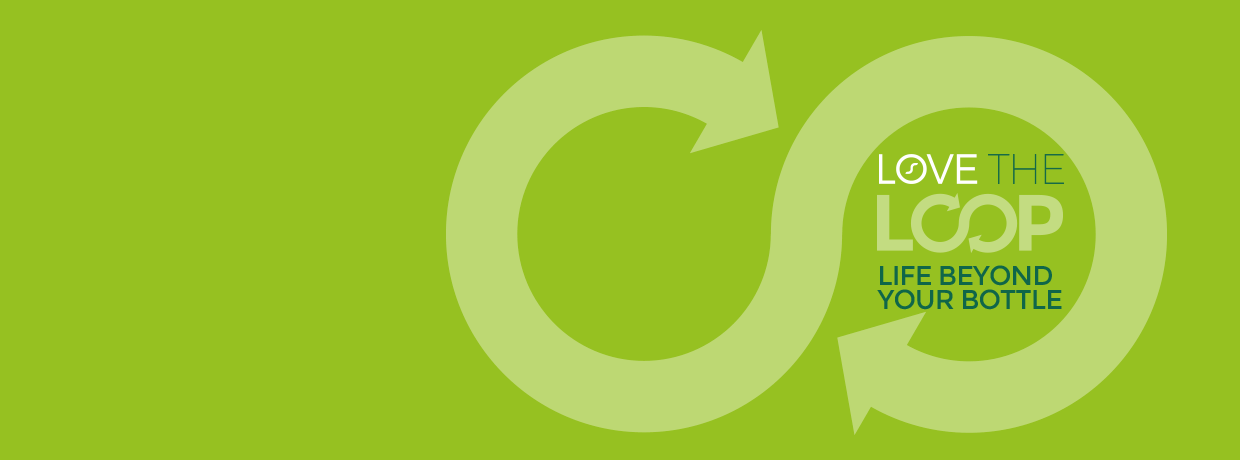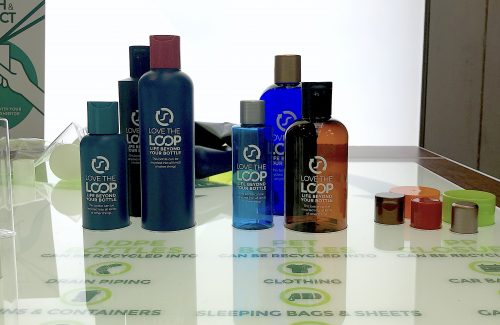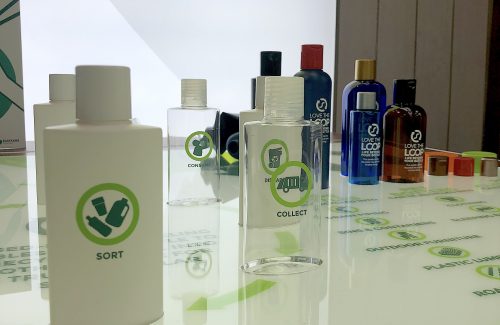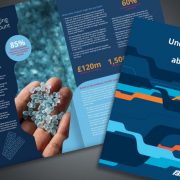With increased awareness of the need to proactively recycle, many consumers feel that open-loop recycling is in some ways inferior to closed-loop recycling, otherwise referred to as primary recycling. However, we firmly believe this needn’t be the case.
It is true that packaging that includes high levels of colouring or labelling, often referred to as contaminants will not be recycled back into its previous life. However, far from condemning these items to landfill, this frequently presents an opportunity to recycle these products into something else, something useful that may otherwise be manufactured from virgin plastics.
Here we take a look at what open-loop recycling is, what it produces, and why it is equally vital in reducing virgin plastic use and landfill waste.
So what exactly is open-loop recycling?
As opposed to closed-loop recycling which is a process where you can recycle your plastic bottle into another plastic bottle, open-loop recycling is a process where your plastic bottle is recycled into other types of products.
Many consider closed-loop recycling is the preferable option; however, open-loop recycling is just as important. The most familiar example of this is recycled plastic bottles made into polyester fabrics for clothing such as fleece fabric for jackets. Without the addition of recycled materials, the fleece fabric would still be manufactured but using brand new materials. This process is regarded as open-loop because the fleece jacket is made from recycled bottles that can’t be recycled into new bottles. However, the many items open-loop recycling produces can have a long life span, significantly reducing landfill usage and precious fossil-based raw materials.
What will your bottle be recycled into?
When using PET materials, plastic bottles can be recycled into many different items, including, T-shirts, polyester sheets, sweaters, fleece jackets and insulation. Additionally, PET plastic bottles can be recycled into sleeping bags, carpeting and plastic strapping. These items are equally valuable in society as well as plastic bottles. All of these products could have a potentially long life span if looked after properly. For example, you can donate your clothing items to charity shops, or they could be transported overseas to other countries, keeping these items from going to landfill.
Did you know?
· It takes approximately 10 PET bottles to make enough plastic fibre to produce a new t-shirt.
· It takes 63 bottles to make a sweater.
· It takes only 14 bottles to create enough insulation (fiberfill) for a ski jacket.
· 114 bottles are enough to make enough insulation (fiberfill) for a sleeping bag.
When using HDPE materials, items can also be recycled into many different products. These include drainage pipes, road surfaces, recycling bins, outdoor furniture and containers; additionally, plastic lumber, picnic tables and playground equipment can also be made. All of these products are valuable to our society and have a relatively long lifespan if looked after properly.
For instance, drain pipes can be in use for many years so it is much more environmentally compliant to use recycled plastic for products such as these instead of creating them from virgin plastic. After all, why create something new when the product is already there? Indeed, the use of recycled plastics can be used for a wide range of useful applications beyond their original purpose. For example, there have been advances in the use of recycled plastics as an environmental alternative to bitumen for road surfaces. Research has indicated that the many benefits of using recycled plastic for road surfaces can include lower maintenance and a significantly longer life span.
When caps are included on bottles using polypropylene (PP) materials, it should be pointed out that these are also recyclable, as long as they are put back on bottles before being tossed into recycling bins. PP closures can be recycled into many items such as car batteries, garden tools, storage containers as well as multi-use shopping bags, yarn, ropes, brooms, pallets and ice scrapers.
For example, the introduction of the charge for single-use shopping bags has seen a staggering 90% reduction of bags purchased from the seven biggest supermarkets in the UK. Many consumers are now opting for multi-use items instead, many of which are made from recycled content. This move has helped to provide a genuinely sustainable solution for something that would have otherwise ended up in landfill.
What are the many benefits of open-loop recycling, and why is it important?
For starters, open-loop recycling naturally reduces waste by repurposing items that would have otherwise gone to landfill. Open-loop recycling is particularly important because it means more and more items can be recycled into more and more different end-products. Also, it is worth pointing that these products would need making regardless, but with open-loop recycling, we are ensuring that they are not made solely from virgin materials but can contain recycled plastics. Open-loop recycling dramatically minimises the use of scarce fossil-based raw materials.
By turning products into something other than what they were before, the possibilities for recycling expand significantly. This is because open-loop recycling helps us get more from old plastic products, effectively giving them another life beyond their natural life span.
While closed-loop recycling lets you create more of the same product without using more natural resources, open-loop recycling provides some innovative benefits. By creating new opportunities to incorporate materials from used items into products we already produce, it also enables us to create new things we may not have thought of before.
Open-loop recycling also helps save natural resources. By providing new sources of useful materials, fewer finite resources are used in production. Additionally, open-loop recycling can take less time and equipment than processes that require you to break down materials chemically.
Why we need more open-loop recycling
As technology develops on the market every single day, there are plenty of ways for recycling operations to expand their secondary recycling options. The more secondary recycling processes we can develop and use, the better for consumers, for recycling businesses, and, ultimately, the environment. Recycling, whether it’s closed-loop or open-loop, is better than doing nothing at all.








